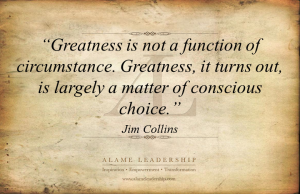HOW TO IDENTIFY AND OVERCOME SKILLS GAPS!
In life and in our careers we come across skills that we are good at some we are even great at and then their are those skills that we really struggle with. This could be communication, emotional intelligence, building rapport or just general communication skills and the worst one which has been shown to be one of the most feared skill of all is Public Speaking.
At times we have to get better at a skill because it holds us back from pursuing our dreams or its important to develop interpersonal relationships as we care for someone and if we don’t connect, we may miss out on something special. To go for that dream job we may need to be more confident, or learn how to articulate our self better. No matter what the gap is you can always find a way to build that skill just like you build a muscle.
Identify
 SWOT Analysis
SWOT Analysis
Doing a SWOT Analysis can help identify our Strength, Weaknesses, Opportunities and Threats. Once we identify things we are not so good at we can focus on what we need to do to develop this weakness and use our strengths to build on our weakness’s where possible. If you have never done a SWOT Analysis before you could ask someone that will help you.
NOTE: This person should know you reasonably well and be willing to be honest and constructive, not critical.
Follow the steps below to discover more about yourself and have fun.
Step 1. Agree to be honest with yourself. This is not to make you feel bad or inadequate, this is to identify where you need to focus to obtain the skill or skills you want to be better at.
Step 2. Get a sheet of paper and divide one page into 4 sections, label each section as shown in the image.
Step 3. Start with your Strengths and write as many as you can, communication, organisational skills, time management, dealing with people, team building, things like this. if you have trouble thinking of any then start with what makes you happy.
Step 4. Then go to your weaknesses and list those, this could be, saying no, poor communication, always being late. keep in mind a strength and threat could be the same. An organised person gets more tasks given to them as they get the job done, this could lead to a weakness of taking on too much.
Step 5. Look at your Strengths and Weaknesses and list the threats. This can come from Weaknesses and can also come from Strengths, again if you are supportive and always there for friends this can be a Weakness as you could be called upon and not say no, therefore not putting your needs first.
Step 6. Look at all sections that have been completed and look where their may be some opportunities. If you never say no in fear of reaction of disappointing, you may need to learn to become assertive, if you have trouble communicating a communications course may be helpful. These are opportunities to address weaknesses and reduce threats.
Here is an example of identifying a weakness and seeing the threat that is created.
A weakness may be you avoid conflict as you don’t know how to deal with it and if you say something you may upset someone. This can happen in personal environments and work environments.
The Threat could be this means you never ask for what you want as this may lead to disappointment of fear of upsetting someone or not pleasing them, so you feel disappointed and unhappy about not having things or not going places you desire. Holding back can lead to unhappiness and feelings of being unfulfilled in many aspects of life. Dealing with conflict can be done in a very positive way so that everyone is happy or at least satisfied and no one is missing out.
What is holding you back
Sometimes we hold ourselves back from doing what we truly desire mostly because of fear, What will they think, what if I fail, what if I look silly, what if i disappoint? sometimes we just don’t know where to start. The good news is you can start here, next is the library, or an audio program, career advice or a short course. Their are many ways to get started but you need to have a clear plan of what you would like to do, so fist identify what holds you back. Sometimes its excuses I don’t have the time, I don’t have the money, in most cases its fear. Look at my acronym for fear and ask yourself if its real. In most cases its not but even if it is real you have to decide if you would like it to be different. Simply learning a better way to communicate can have a significant impact on everything that you do.
False
Evidence
Appearing
Real
Overcome
Make a Plan
Part of making a plan is finding the people or the course or even the resources that can assist in the plan being able to come to life. Resources can be people or things such as books and audio programs a short course or even setting a goal. What ever you want, you must plan and take action on that plan for things to be different. As you may have heard before “if you keep doing what you have always done you will keep getting what you have always got”
So make an action plan on what you are going to do today towards just one of your weaknesses and you will be on the road to better things today.
Example
Weakness – doing to many tasks and not getting the important tasks completed.
Threat – Deadlines not being met and tasks not being completed
Opportunity – Learn how to prioritise and not get distracted
Action Plan – Plan my day before it started and prioritise and allocate times to be completed
Outcome – A more efficient day, completed tasks, less Stress
We hope we have helped you fill in some of the Gaps.
Read Full Post »
 SWOT Analysis
SWOT Analysis








